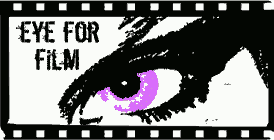Eye For Film >> Movies >> Singing Back The Buffalo (2024) Film Review
Singing Back The Buffalo
Reviewed by: Jennie Kermode

Before Europeans began to settle in North America – or Turtle Island, as it was known to its established inhabitants – an estimated 60 million buffalo roamed its plains, its coasts, its low hills. By 1884, there were just 325 remaining.
“I was raised away by a farming family,” says Tasha Hubbard, introducing her film, and there’s a weight of history right there, but this story is about the buffalo – and, as a Blackfoot man explains it, there’s a particular meaning to one word for ‘story’ which more accurately translates as ‘your involvement in a happening’. It’s a richer and more personal sharing of knowledge, and that’s what we get here. To Cree people, as to those of most other indigenous nations in the region, talking about the buffalo will always be personal because the buffalo are a people, and closely related to their own.

There are different ways of explaining this. A Lakota man tells us that all people originally emerged from caves, with some emerging as human, some as buffalo. Elsewhere we learn of covenants between buffalo and humans, agreements that the former would be well treated and their needs respected, in return for which they would give enough of themselves to provide food and clothing and tools as needed. We see sacred places where humans paid tribute to buffalo, and learn of how one was smashed into fragments, ostensibly to make way for a dam, but by the same white people whose forebearers had understood that to slaughter the great buffalo herds was to starve the Native peoples and force them to surrender.
That story has been told before, though it’s possible that not all white people have grasped the scale of it. It seems likely that most have not understood the deep trauma it caused not simply because of its practical implications but because Native Americans perceive it as a genocide, the deliberate extermination of a race of people. For those who find this difficult to grasp, there are stories about buffalo mourning rituals, about the matriarchal structure of the herds, about communication between humans and buffalo using drumming and songs. Hubbard did her PhD in buffalo consciousness and is now part of a large scale project which provides the film with its central, driving narrative: the restoration of buffalo to their ancestral lands.
Travelling around the northern part of the continent – taking in Banff, Alberta, South Dakota and more – Hubbard and her crew follow the work of Leroy and Amethyst of the blood tribe, Kainai. Beginning at a First Nations summit in Saskatchewan, they promote an accord which will enable buffalo to move freely across adjoining or proximate reservations with full protection. It’s a slow process but one that gathers steam over the course of the film, and has the potential to initiate massive systemic change. Far from being merely symbolic work, this project has great potential for renewing and restoring the land, helping to mitigate damage caused by climate change in ways that might surprise you. It also restores indigenous people’s confidence in themselves as advocates for the land and its natural ecosystems.
Singing Back The Buffalo screened as part of ImagineNative 2025, and it is built very much around Cree sensibilities, which don’t always align with mainstream US or Canadian ones. Scenes in which a buffalo is ‘harvested’ may upset some viewers, though the process is very respectful and it’s interesting to see a five-year-old girl, initially squeamish, getting involved. On the other side of the equation, some buffalo ceremony songs are pointedly not filmed, so we must simply exercise trust when informed that otherwise shy young buffalo approached upon hearing them.
With archive images and simple animation filling in the gaps between seemingly disparate sequences, the film feels at first as if it’s tugging in several different directions, but gradually pulls it all together. It has a lot to say, but more important is how it goes about it. It is a piece of work designed not merely to inform, but to broaden the viewer’s perspective, and for those willing to engage sincerely, it lives up to that promise.
If you’d like to know more, visit the International Buffalo Relations Institute.
Reviewed on: 07 Jun 2025
















